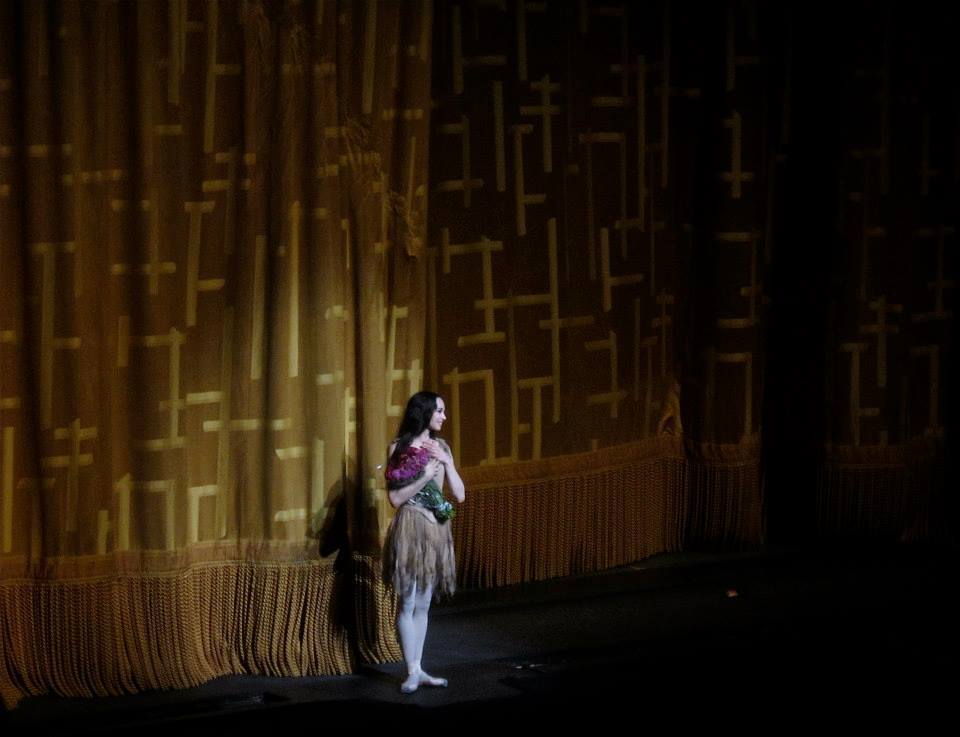I went to MANON to see Diana Vishneva, whom I have seen before, but too long ago and not often enough. This was her 10th season with the American Ballet Theatre, her second home along with the Mariinsky in Russia, and cause for great celebration at the weekend close.
The ballet itself is of interest, partly because of its peculiarities. Choreographed by Kenneth MacMillan in 1974, to the story of Massenet’s 1881 opera (from the Abbé Prévost novel), the ballet is danced to music that, while still from Massenet, is not from the opera. Owing partly to its plot, in which a fallen French woman ends up dying in the swamps of Louisiana, MANON seems older than something cooked up in the mid-‘70s; it feels more than a century old instead of under half of one, a sort of invented tradition in the classical repertory. It is necessary to look closely to see what is modern and innovative in it. The choreography unfolds like a succession of knots that, on the verge of pulling tight, slip loose and surprise the dancers with a dramatic moment – lovers gazing at each other, or a foot once tangled abruptly free to make an emotionally telling step. The patterns are startlingly naturalistic, at times, despite their classicism, well-suited to the verismo origins of the material. Drunkenness, fatigue, poverty, and real human pain are expressed through, rather than in spite of, the most stylized of vocabularies.
At all of which Vishneva, as Manon, excelled, no surprise, remarkably. I would say that she is proof that style is that which makes the difficult look easy, except that, observing the deep naturalism of her technique, she seems to have made it actually easy; not the training and preparation for it, of course, but its execution in the moment. If there is a problem with this, it is that it exposes, just a little, the degree to which the other dancers of the world – even her debonair partner Marcelo Gomes – have yet to let go of the last degree of physical calculation. She entered like a rivulet among manmade channels, a thing of such effortless reality as to seem almost unreal. Yes, there is irony in this description, for she rounds off sharpness and softens the hardest emotion. Vishneva dances in a state of second nature; it seems, simply, to happen. The dramatic effect of her artistry cannot be understated; on the contrary, it validates the power of the living stage. The most negative emotions are made beautiful – no, sublime – not because she has aestheticized them, but because she has kept them human.
For more on the American Ballet Theatre, click here.
